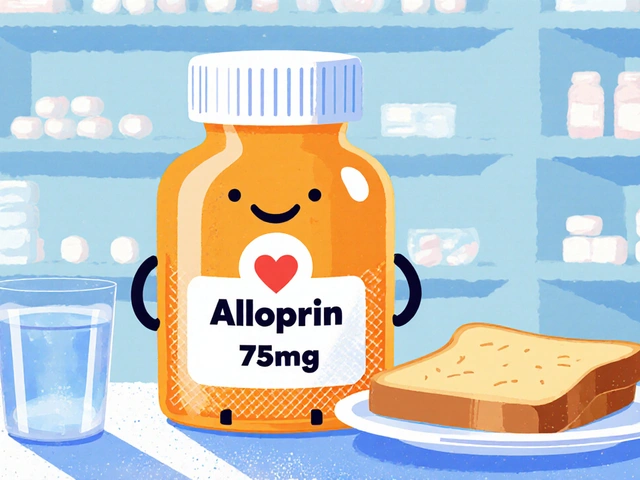Silicone vs TPE Material Selector
Which Material Fits Your Needs?
Answer these questions to get a personalized recommendation based on the article's safety, durability, and usage guidelines.
Please answer the questions above to see your recommendation
Your personalized material recommendation will appear here
When it comes to choosing a new pleasure product, the material often decides how comfortable, safe, and enjoyable the experience will be. Two names dominate the conversation: silicone vs TPE. Below you’ll discover how each material feels, how they affect your health, and which one fits your budget and play style.
What Is Silicone?
Silicone is a synthetic polymer made from silicon, oxygen, carbon and hydrogen. It’s praised for its non‑porous, hypoallergenic, and ultra‑smooth surface, which makes it a favorite in medical devices and high‑end sex toys.
- Non‑porous: Bacteria cannot settle inside the material.
- Temperature‑resistant: Safe for boiling, freezing, or using with heat‑based play.
- Firmness range: From soft, jelly‑like vibes to rock‑hard dildos.
Popular brands often advertise “medical‑grade silicone,” a claim that signals a stricter manufacturing standard and fewer additives.
What Is TPE?
Thermoplastic Elastomer (TPE) blends plastic and rubber polymers to create a flexible, skin‑like feel. It’s marketed for its realism-many users say TPE mimics the texture of real flesh better than silicone.
- Soft and stretchy: Ideal for toys that need to bend or hug.
- Usually phthalate‑free, which addresses a common chemical‑concern.
- Porous nature: Microscopic holes can trap bacteria if not cleaned thoroughly.
Because TPE is softer, it often feels more “lifelike,” but that softness comes with trade‑offs in durability.
Safety and Health Considerations
Body‑safe means a material won’t leach harmful chemicals into the body. Silicone scores high on this metric because it’s chemically inert. Most medical‑grade silicone toys are also free of latex, making them safe for people with latex allergies.
In contrast, TPE’s safety hinges on the manufacturer’s quality control. While many reputable brands produce phthalate‑free TPE, the material’s porous structure can harbor microbes. Users who are prone to infections or have compromised immune systems should treat TPE toys with extra caution.
Allergy‑related reactions are rare with silicone but more common with TPE, especially if the toy contains hidden latex or other sensitizing additives.
Cleaning and Maintenance
Cleaning is where the two materials truly diverge.
- Silicone: Because it’s non‑porous, you can boil it for five minutes, run it through the dishwasher (top rack only), or scrub it with mild soap and warm water. No lingering scent or residue.
- TPE: Must be hand‑washed with warm water and a gentle, fragrance‑free cleanser. Boiling or using harsh chemicals can degrade the surface, making it tacky or sticky over time.
Both materials benefit from thorough drying before storage. Silicone can be stored in any airtight container, while TPE prefers a soft‑cloth bag to avoid compression marks.
How to Choose the Right Material for You
Think of the decision as a match between your play style and the toy’s attributes.
- Firmness vs. Flexibility: If you enjoy strong, defined pressure, silicone’s higher firmness range delivers. If you prefer a bendy, “real‑feel,” TPE’s softness shines.
- Budget: TPE toys usually cost 30‑50% less than premium silicone pieces, making them a good entry‑level option.
- Health Sensitivities: For anyone with allergies, latex concerns, or a need for sterilization, silicone is the safer bet.
- Longevity: Silicone toys can last years with proper care; TPE may start feeling sticky after several months of regular use.
Ask yourself which factor matters most on a given purchase, and let that guide you.
Buying Tips and Red Flags
When you’re scrolling through online shops, keep an eye out for these cues.
- Look for “medical‑grade” or “food‑grade” labeling on silicone products.
- Verify that TPE toys are explicitly listed as phthalate‑free and latex‑free.
- Avoid toys that claim “silicone” but are actually made from a softer polymer blend; reputable sellers usually detail the exact material.
- Read user reviews for mentions of odor, stickiness, or reactions. Real‑world experiences often reveal hidden issues.
- Consider the manufacturer’s return policy and warranty-high‑quality silicone items often come with longer guarantees.
Side‑by‑Side Comparison
| Attribute | Silicone | TPE |
|---|---|---|
| Body‑safe rating | High - inert, hypoallergenic | Medium - depends on production |
| Porosity | Non‑porous | Porous |
| Firmness range | Soft to very firm | Soft to medium |
| Price (average US$) | 50‑150 | 30‑80 |
| Longevity | 5+ years with care | 1‑2 years before degradation |
| Cleaning method | Boil, dishwasher, soap | Hand‑wash only |
Bottom Line
If you value maximum safety, easy cleaning, and long‑term durability, silicone is the clear winner. If realism, softness, and a lower price tag are higher on your list, TPE could be the better fit-provided you’re diligent about cleaning and storage.
Frequently Asked Questions
Is silicone truly body‑safe?
Yes. Medical‑grade silicone does not contain phthalates, latex, or heavy metals, making it safe for internal use and compatible with most lubricants.
Can I use any lubricant with silicone toys?
Avoid silicone‑based lubes on silicone toys because they can break down the surface. Water‑based or oil‑free hybrid lubes are ideal.
Are TPE toys safe for anal play?
TPE’s softness can be comfortable, but its porous nature means it can’t be fully sterilized. If you choose TPE for anal use, clean it meticulously and consider using a condom.
How often should I replace my sex toy?
Silicone toys can last several years if cleaned and stored correctly. TPE toys typically need replacement after 12‑24 months, especially if they become sticky or develop an odor.
Can I share my silicone or TPE toy with a partner?
Yes, but always use a fresh condom for each person to prevent cross‑contamination. This is especially important with TPE because of its porosity.





There are 14 Comments
Brandon Phipps
When you’re weighing silicone against TPE, the first thing to consider is how the material will interact with your body over time. Silicone’s non‑porous nature means bacteria can’t settle inside, which translates to a lower infection risk during repeated use. That also makes it safe to sterilize by boiling, a convenience many lovers of hygiene appreciate. TPE, on the other hand, offers a softer, flesh‑like feel that many users find more realistic, especially for toys that need to bend or hug. The trade‑off is that its porous structure can trap microbes if you’re not meticulous about cleaning. In terms of durability, silicone typically outlasts TPE by several years, maintaining its firmness and smoothness even after many washes. Budget‑wise, TPE often comes in at 30‑50 % less cost, making it an attractive entry‑level option for newcomers. If you have latex allergies or heightened sensitivity, silicone’s hypoallergenic profile is a decisive advantage. Temperature resilience is another plus for silicone; you can safely use it in hot water, the freezer, or even apply heated play accessories. TPE can handle moderate temperatures but will degrade if exposed to boiling water or harsh chemicals. For anal play, the extra firmness of silicone can provide a more controlled experience, whereas TPE’s softness might feel comfortable but demands extra caution due to its porosity. When it comes to lubricants, stick with water‑based formulas on silicone to avoid material breakdown; TPE is generally compatible with most lubes but still benefits from a gentle cleanser. If you value a long‑term investment that will stay reliable for five years or more, silicone is the clear winner. Conversely, if you prioritize a lifelike, supple texture and are okay with more frequent replacement, TPE can be the better fit. Ultimately, match the material to your personal priorities – safety, realism, cost, or longevity – and you’ll end up with a toy that enhances your pleasure without hassle.
yogesh Bhati
Man, think about how the universe of pleasure is basically a reflection of our own desire to explore boundaries, right? Silicone feels like that sterile lab coat, while TPE is the raw, primal flesh of the unknown. If you’re into meditative vibes, go silicone; if you crave the chaotic embrace of flesh, TPE calls you.
Akinde Tope Henry
Silicone safe TPE cheap but porous.
Jeremy Wolfe
Look, if you’re training for strong, firm pressure, silicone’s firmness range is a solid foundation. For beginners wanting a gentle, flexible feel without breaking the bank, TPE gives that soft, lifelike vibe. Just remember to keep the hygiene game strong whichever you pick.
Dan McHugh
Good summary.
Sam Moss
What a kaleidoscope of textures! Silicone dazzles with its sleek, glass‑like sheen and the peace of mind that comes with medical‑grade purity, while TPE whispers sweet, supple secrets that mimic the human form. Both have their own poetry – pick the stanza that sings to you.
Suzy Stewart
Silicone wins for safety ✅ but TPE’s realism can’t be ignored 🙌. Choose wisely! 🌟
Traven West
Grammar check: silicone non‑porous, tpe porous; both need cleaning. No fluff.
Jonny Arruda
Silicone’s durability makes it a longer‑term investment, whereas TPE offers a budget‑friendly, realistic experience for those just starting out. Either way, keep it clean and store it properly.
Melissa Young
From a cost‑efficiency standpoint, TPE’s low‑price point maximizes ROI for casual users, while silicone’s premium price aligns with its high‑performance specs and compliance standards. Choose based on your KPI: safety vs. realism.
SHASHIKANT YADAV
👍 Silicone for easy sterilization, 🧼 TPE for that lifelike feel – just remember one extra step of hand‑washing! 🌈
Ryan Pitt
Silicone is a safe bet if you need a toy that lasts and can be boiled, while TPE gives you that soft, stretchy vibe at a friendlier price.
Jami Johnson
Imagine the drama of a passionate tango: silicone is the disciplined lead, never missing a step, while TPE is the seductive partner, flowing and yielding. Both have their stage, but the audience-your body-deserves the safest performance. Choose the lead that respects your limits.
abhi sharma
Sure, spend your money on cheap plastic, what could possibly go wrong?
Write a comment
Your email address will not be published. Required fields are marked *